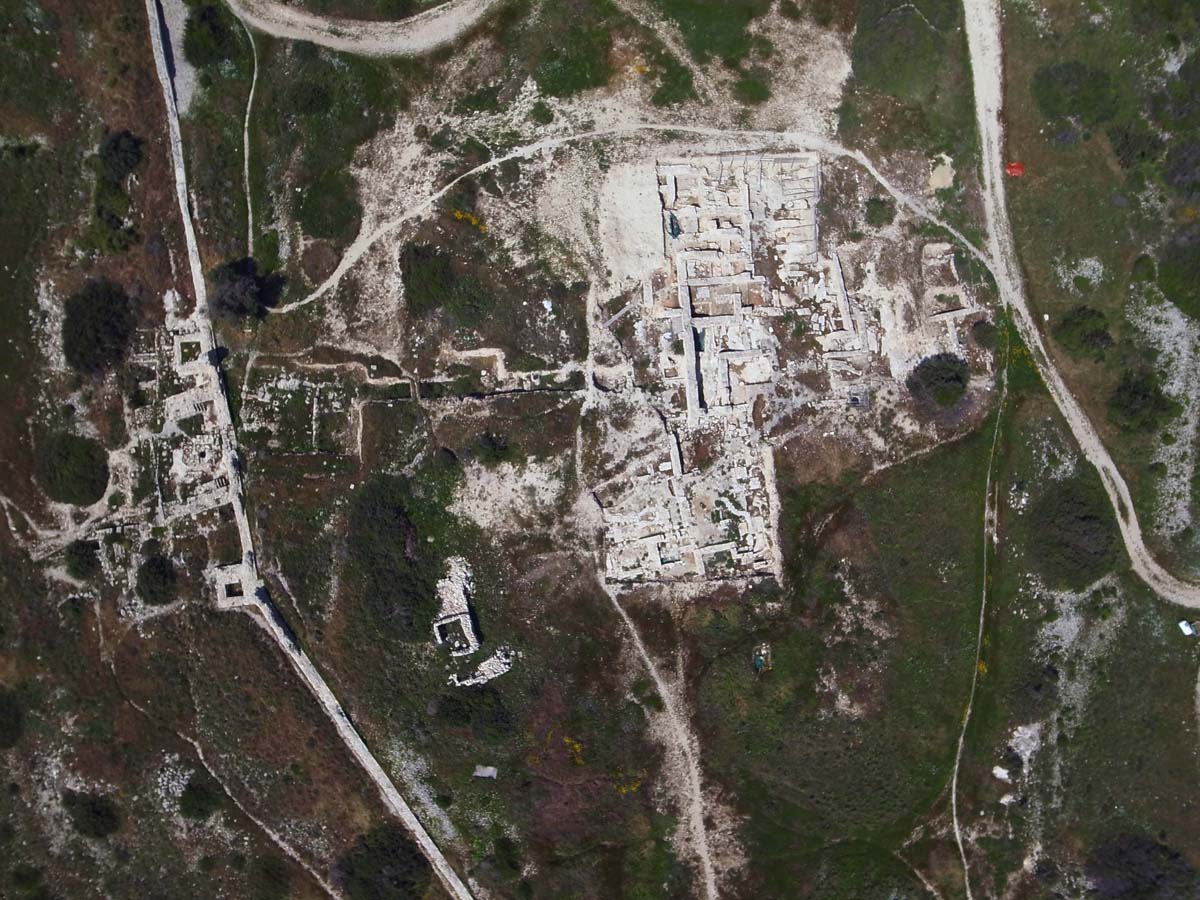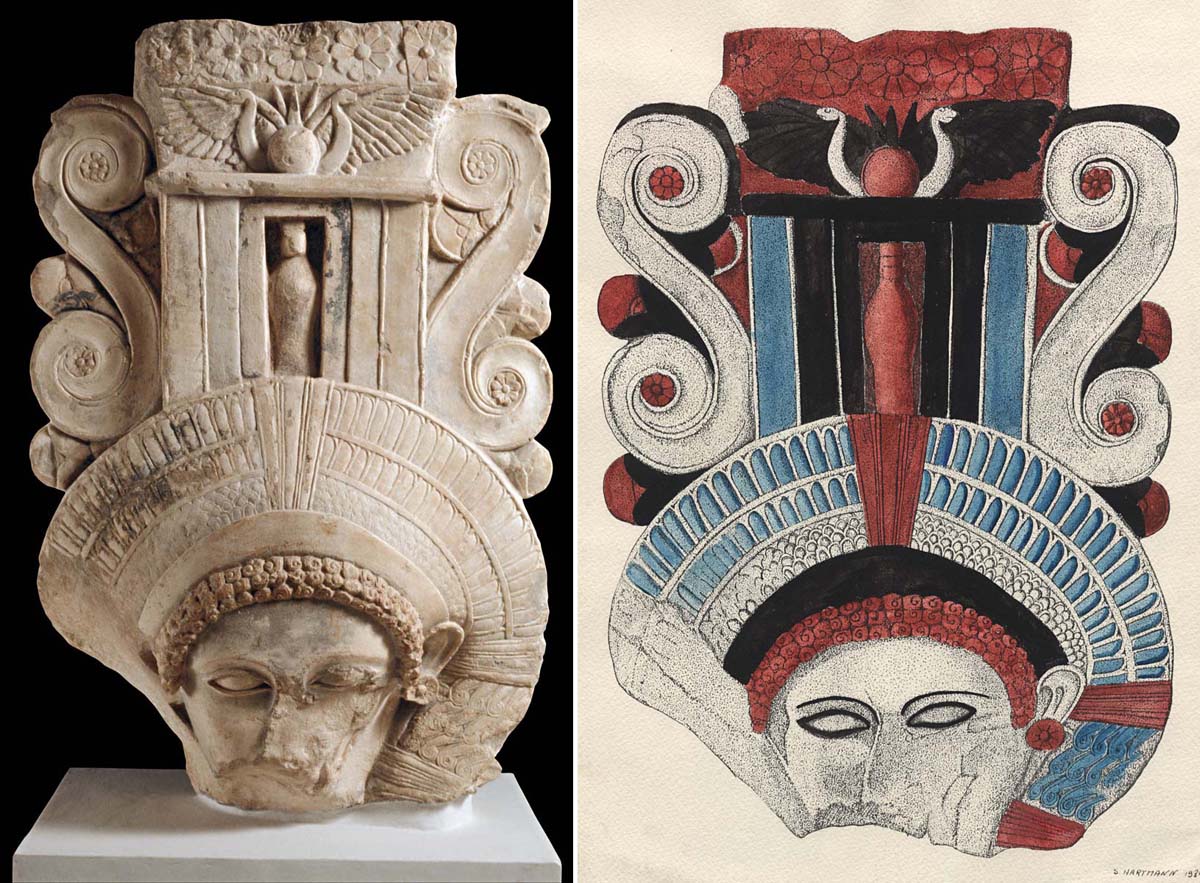Beginning in 1975 excavations on the acropolis below the hill’s summit brought to light monumental remains that are part of vast storage areas. Over the years that followed (with a few interruptions) the excavation allowed us to bring out a substantial part of the building believed to be the palace of the kings of Amathus.

Vue aérienne du palais avec la muraille médiane au sud, 2011 (Chr. Gaston / Archives EFA, N486-002)
The construction of the palace dates back to the Cypro-Geometric III period (end of the 9th – beginning of 8th century BC) as was proven by a stratigraphic survey from 1997. This first phase (documented by a limestone column base and the correlated ceramic material), is succeeded by a second one (from the Archaic period) during which the building was modified. The third phase from the beginning of 5th century BC consists of significant expansion of the storage spaces through the Classical period (5th – 4th century BC). Along with the fall of the kingdom at the start of the Hellenistic period, the palace’s destruction is contemporaneous with, or directly follows, the war between Ptolemy and Antigonus (then Demetrius) for possession of the island.

Stèle hathorique polychrome (Ph. Collet / Archives EFA, Y.1787 ; S. Hartmann / Archives EFA, 17895)
Inside the excavated rooms and amidst the rubble following the demolition and subsequent abandonment of the palace were found many statues in terracotta and limestone, an abundance of local as well as imported ceramic material, and many other objects related to the economic and cultual activities that took place on the premises. Particularly striking is a polychrome Hathoric stela discovered lower down in 1983, which was certainly connected to the palace: like elsewhere on Cyprus, Hathor, avatar of the Great Goddess, in this form ensured the royal power her divine protection.
A. Cannavò, trans. A.M. Schroth-Daskalakis
